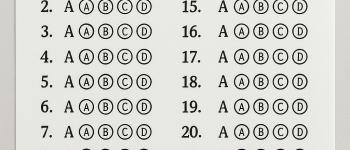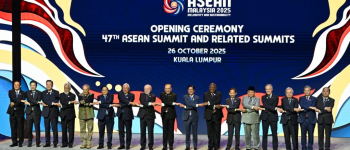Prime Minister Dhan-Dhaanya Krishi Yojana (PMDDKY)
8th Aug 2025
Read
.png)
TABLE OF CONTENTS
- Objectives
- Key Features
- Planning and Implementation
- Institutional Mechanism
- Monitoring and Ranking
- Selection of Districts
In July 2025, the Union Cabinet approved the Prime Minister Dhan-Dhaanya Krishi Yojana (PMDDKY), a new flagship scheme aimed at transforming agriculture in 100 identified low-productivity districts. The programme focuses on the convergence of multiple schemes, better planning, and efficient resource utilization at the district level. The initiative draws inspiration from the Aspirational Districts Programme (ADP) launched in 2018, which successfully improved key development indicators in India's most backward districts.
Objectives
The main objectives of PMDDKY are:
- To increase agricultural productivity in low-performing districts.
- To promote crop diversification, sustainable agriculture, and encourage natural and organic farming practices.
- To expand post-harvest storage capacity at the panchayat and block levels to reduce wastage.
- To improve irrigation facilities to ensure better water management.
- To ensure the availability of both short-term and long-term credit to farmers.
These measures aim to raise national farm productivity averages, generate local employment, promote value addition in the agriculture sector, and contribute to Atmanirbhar Bharat (Self-Reliant India), as emphasized in the Union Budget 2025-26.
Key Features
A) Outlay and Duration
- Annual outlay: Rs. 24,000 crore
- Duration: Six years, starting from the financial year 2025-26
B) Scope
- Coverage of 100 agricultural districts
- Convergence of 36 schemes across 11 central ministries
- Focus on agriculture and allied activities such as livestock, fisheries, and horticulture
Planning and Implementation
Each district will prepare a District Agriculture and Allied Activities Plan.
- The plan will be formulated by a District Dhan-Dhaanya Committee, headed by the District Collector, with progressive farmers as members.
- Plans will align with national goals including:
- Crop diversification
- Conservation of water resources and soil health
- Promotion of natural and organic farming
- Self-sufficiency in agriculture and allied sectors
- Plan preparation will involve consultations with local stakeholders and take into account local agro-climatic conditions and cropping patterns.
- Each district will collaborate with state and central agricultural universities for technical and knowledge support.
Institutional Mechanism
- Multi-level committees will be formed at the district, state, and national levels for coordination and monitoring.
- Central Nodal Officers (CNOs) will be appointed for regular field visits and progress reviews.
- NITI Aayog will guide implementation and capacity building, continuing its role from the Aspirational Districts Programme.
Monitoring and Ranking
- Districts will be ranked periodically to encourage competition, following the ADP approach.
- 117 Key Performance Indicators (KPIs) will be used to track performance.
- A dedicated real-time portal/dashboard will be developed for monitoring.
- District performance will be reviewed monthly.
Selection of Districts
- Districts will be selected mainly based on:
- Low agricultural productivity
- Moderate cropping intensity
- Below-average flow of agricultural credit
- Cropping intensity indicates how efficiently land is used; it is the ratio of Gross Cropped Area (GCA) to Net Sown Area (NSA). For example, India's average cropping intensity was about 155% in 2021-22, with wide variation among states.
- Districts under PMDDKY will be allocated to States and Union Territories in proportion to their share of net cropped area and operational holdings. Every State and UT will have at least one district covered under this scheme.

Author: Lemo
Lemo is the quiet observer of the UPSC world. He writes when the city sleeps, fueled by black coffee and the ticking clock. As the visionary behind Epoch IAS, he crafts notes that are short, sharp, and always a step ahead of the syllabus — trusted by aspirants burning the midnight oil.
Feel free to use images in our website by simply providing a source link to the page they are taken from.
-- Epoch IAS
Explore By Category
- Polity and Governance
- Important Bills and Acts
- International Relations
- International Organisations
- Places in News
- Indian Economy
- Environment
- Geography
- Species in News
- Protected Areas in News
- Science & Technology
- Government Schemes & Programmes
- History and Art & Culture
- Miscellaneous
- Index & Reports
- Defence Exercises
- Security
Latest Posts
Share views on Prime Minister Dhan-Dhaanya Krishi Yojana (PMDDKY)
Please keep your views respectful and not include any anchors, promotional content or obscene words in them. Such comments will be definitely removed and your IP be blocked for future purpose.
 29th Jul 2025
29th Jul 2025
 29th Oct 2025
29th Oct 2025
 30th Oct 2025
30th Oct 2025
 9th Aug 2025
9th Aug 2025
 29th Jul 2025
29th Jul 2025
 27th Aug 2025
27th Aug 2025
 29th Jul 2025
29th Jul 2025
 31st Oct 2025
31st Oct 2025
